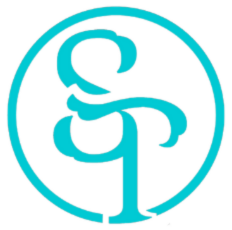“When we are flooded, stressed, or overwhelmed, our brains are having a difficult time processing, learning, and adapting. When we focus on our breathing, we prevent this flooding by redirecting our awareness and energy into our bodies.”

working backwards
Many people come to therapy when they are overwhelmed, exhausted, and after they have tried some online psychology tips and tricks with little to no relief. Their energy is running low or they are running around in circles going nowhere. Family and friends give advice and recommendations on how to think, plan, and overcome but all this does is leave the person feeling more drained, stuck, and frustrated. For a lot of people, trying to help with ‘heady’ information and tips can just lead to more of the same stress. Our brains can only function optimally when there is a certain amount of energy (too much and you are flooded; too little and you are disinterested). In this post, we’ll talk about 3 ways to work backwards: Starting from the body (tension and feelings) before going to the thoughts/emotions/beliefs. This way we can get immediate relief from the stress and tension while creating ways to be attuned to our body, feelings, and overall experience.
First, we need to have awareness of our body. The fancy word, interoception, is our sense of what is happening in our body. We can become so immersed in planning, solving problems, stressing about situations that we forget to feel what is going on in our bodies. A feeling is the effect of an emotion, not the emotion itself. Feeling vs emotion is often used interchangeably but it may help to separate the two. For example, “I feel afraid” is the emotion of fear and the accompanying feeling in the body (uncomfortable tension). The first step in working backwards is to locate the tension in our body. For instance, maybe your fear leads to tension in the chest and shoulders. Take a few minutes to hunt for tension in your body–even if you aren’t having a noticeable emotion. Start with awareness in your toes and slowly go through your body up to your face–locating any tension and doing nothing with it. Simply locate.
Now that we have located some tension in our body, now what? Instead of trying to get rid of it, start by feeling it fully–where does the tension start, finish, how tense is it (1-10), are there groups of muscles tensing or one major muscle tensing, etc. It can be hard to simply relax these muscles so after you have spent some time just being with the tension you feel, go ahead and contract/tense the muscles up further. Keep it tense for 3-5 seconds and then release. Do this process with different body parts (locate, stay with the tension, then tense/release for 3-5 seconds at a time). Notice what happens with your body, does it drop down and relax into the floor leaving a little taste of relief from the ongoing tightness and stress? Most people feel slight-to-moderate relief after doing this contract/relax method for only a few minutes.
The third way of “working backwards” revolves around the breath. The breath is incredibly important for many reasons. First, the breath can point to our mental state. For example, the breathing pattern of shallow/fast is connected to stress/anxiety while deep/slow is connected to a relaxed/calm state. When we are flooded, stressed, or overwhelmed, our brains are having a difficult time processing, learning, and adapting. When we focus on our breathing, we prevent this flooding by redirecting our awareness and energy into our bodies. Another important aspect of breathing is that it will automatically help to bring us into the moment. With how many stressors there are in the world and the never-ending problems and demands, it is very easy to leave many moments behind. If you are focused on your breathing, you stay present with the breath (similar to a metronome) and shed some of the excess and often unnecessary stress that is weighing heavy on you. When intentionally focusing on your breath, start with deep breaths (inhale for 6 seconds, hold your breath for 6 seconds, then exhale for 6 seconds=1 cycle). After 3-4 cycles, you will likely relax some tension and you may get a sense of mental clarity.
Lastly, like many things, positive tools can become negative tools depending on how we use them. Having more attention and attunement to our body and breath can lead to increased regulation skills, emotional attunement, and energy management. However, it can become an easy strategy of avoidance. If we have painful past experiences that lead to negative thoughts/images, the increased body awareness can serve as a strategy to escape. Be mindful, using skills to master body regulation can be powerful but check with yourself from time to time to make sure that this power isn’t becoming a magician hiding your pain.

1 thought on “Working Backwards”